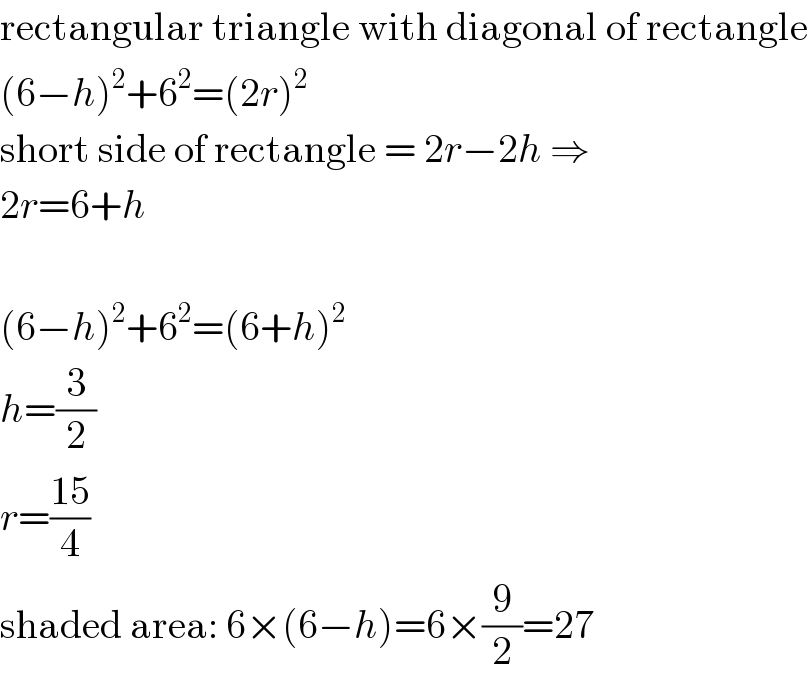
Question Number 58377 by naka3546 last updated on 22/Apr/19

Answered by MJS last updated on 22/Apr/19

$$\mathrm{rectangular}\:\mathrm{triangle}\:\mathrm{with}\:\mathrm{diagonal}\:\mathrm{of}\:\mathrm{rectangle} \\ $$$$\left(\mathrm{6}−{h}\right)^{\mathrm{2}} +\mathrm{6}^{\mathrm{2}} =\left(\mathrm{2}{r}\right)^{\mathrm{2}} \\ $$$$\mathrm{short}\:\mathrm{side}\:\mathrm{of}\:\mathrm{rectangle}\:=\:\mathrm{2}{r}−\mathrm{2}{h}\:\Rightarrow \\ $$$$\mathrm{2}{r}=\mathrm{6}+{h} \\ $$$$ \\ $$$$\left(\mathrm{6}−{h}\right)^{\mathrm{2}} +\mathrm{6}^{\mathrm{2}} =\left(\mathrm{6}+{h}\right)^{\mathrm{2}} \\ $$$${h}=\frac{\mathrm{3}}{\mathrm{2}} \\ $$$${r}=\frac{\mathrm{15}}{\mathrm{4}} \\ $$$$\mathrm{shaded}\:\mathrm{area}:\:\mathrm{6}×\left(\mathrm{6}−{h}\right)=\mathrm{6}×\frac{\mathrm{9}}{\mathrm{2}}=\mathrm{27} \\ $$
